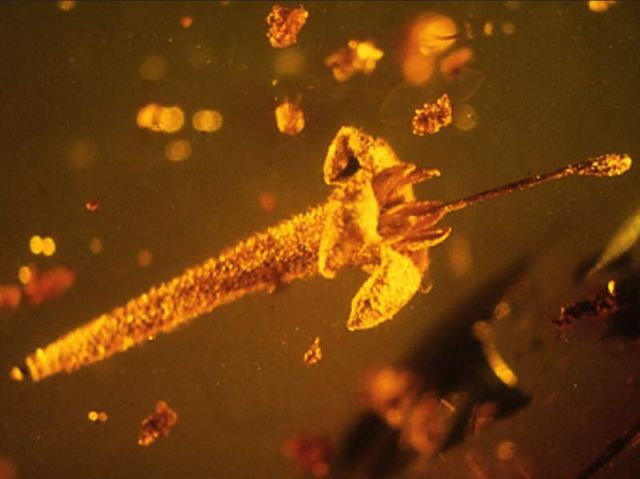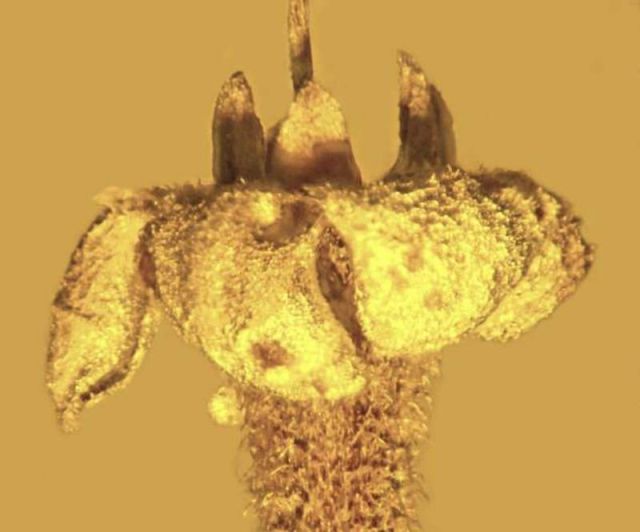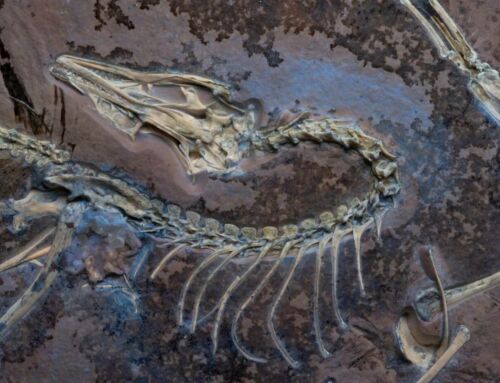15 million years old flower perfectly preserved in amber, may give significant evidence about the evolution of life on Earth.
Flower Strychnos electri preserved in amber may provide significant palaeoevolutionary and biogeographical data concerning life in our planet.
Images credit George Poinar
The flower trapped inside a piece of 15-million-year-old Mid-Tertiary Dominican amber, sat in storage for over 30 years.
A scientist from Rutgers has identified a flower trapped in ancient amber, belonging to a completely new species.
Lena Struwe, professor of botany in the School of Environmental and Biological Sciences, has discovered that two flowers found encased amber for at least 15 million years belong to none of the known 200 species of the genus Strychnos. Therefore, they represent a newly discovered species, Strychnos electri. Struwe coined the species name in honor of its amber origin, since elektron is the Greek word for amber.
Struwe and the entomologist George Poinar, renowned for his studies of insect fossils trapped in amber, are publishing their findings in the journal Nature Plants. Poinar is professor emeritus of integrative biology at Oregon State University.
Amber is fossilized tree resin. Although scientists often find plant fossils in amber, they’re usually just fragments – a petal here, a stamen there. Intact specimens are rare. These flowers were among 500 fossils, mostly insects, Poinar brought back to his lab from a field trip to an amber mine in the Dominican Republic in 1986. The insects kept Poinar busy for years. But this specimen eventually caught Poinar’s eye.
Poinar, sayd:
“These flowers looked like they had just fallen from a tree. I thought they might be Strychnos, and I sent them to Lena because I knew she was an expert in that genus.”
source Rutgers







Leave A Comment